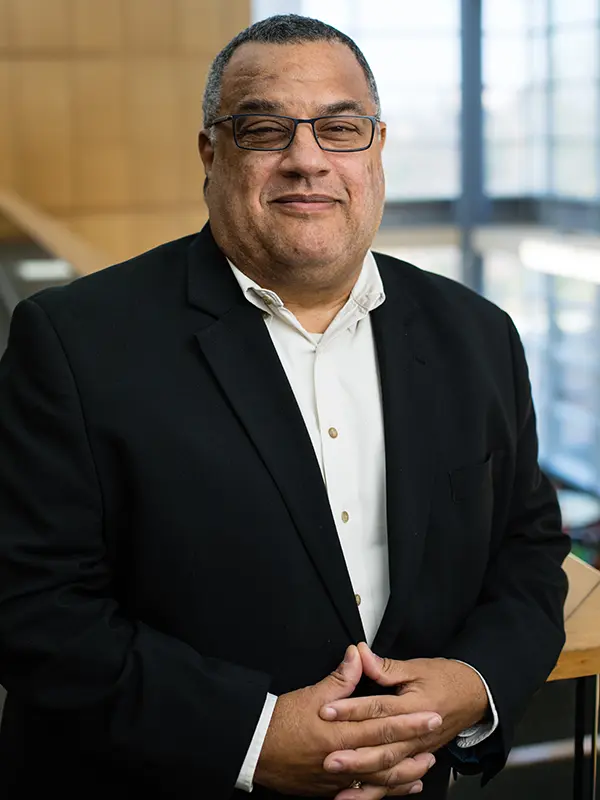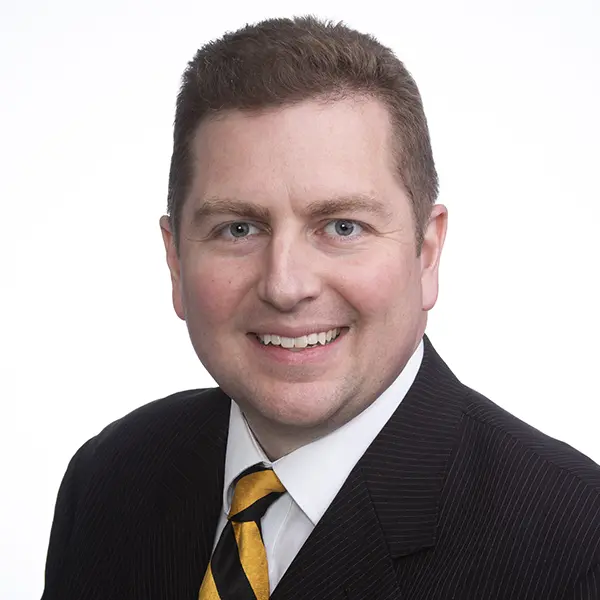
By 2025, a staggering 463 exabytes will be created daily, and Purdue University alumni executives say they are hiring graduates who can draw value from huge raw data sets.
Just visualizing an exabyte (1000 bytes to the sixth power), let alone lassoing the 146,880 megabytes of data that each person can create daily, is an intellectual challenge.
All of that data says something about human behavior, something about what humans value. The challenge is identifying and leveraging that value. Akin to mining for lithium, or hunting for the Boggs Hizon particle, it’s top of mind for business.
Google’s Chief Data Strategist Neil Hoyne (BS '03) says his industry’s number one need is people who “capture value from data, not just collecting data, organizing data, integrating data and hoping data will tell us a story.”
In short, industry needs professionals who know more than technologies. “Almost all programs today teach students the tools,” says Dr. Mohammad Rahman, the inaugural Daniels School Chair in Management. They need analytical versatility, “the ability to understand how to turn a business problem into a data problem, then do the data exercise” without losing sight of the business problem.
To cultivate analytical versatility, Rahman teaches students to be data bilinguals, to think about which data accompanies each problem. Then they need the intelligence to make market predictions and avoid inference errors along the way.
In addition to analytical versatility, Christian Garcia (MS '87), retired CFO for BrandSafway, says industry professionals need to “have the capacity to adapt to changes in environment and technology. Technologies and competition will continue to evolve over time, and companies need people who are intellectually agile so they can learn new capabilities as required and lead transformational changes within their organizations.”

No better example underscores how critical it will be to stay intellectually agile than this year’s release of generative AI and large language models (LLMs).
Policymakers, educators and business responded with both concern and excitement. While some people wonder if AI will replace jobs, Rahman says it will augment work for employees who are willing to change and adapt. They will need the intellectual agility to innovate usages for AI and machine learning with their work, but to do so, Rahman says they’ll need to have a strong grasp of how the technologies were trained: what data sets were used and what happens when machine learning software is generating the data from which it will learn?
At present, Rahman says humans scraped and mined the data across platforms and technologies, then provided historical data to create LLMs and other AI, but that’s set to change. Managers and leaders will need to understand how the tools work, and which is the appropriate tool for the task if they are to derive value, not just produce an action. In short, it’s not just the technologies, it’s understanding the data sets.
The bar for intellectual agility at the Daniels School requires students to develop well-rounded skill sets, both soft and technical.
“We’re training you to solve problems that don’t currently exist in environments in industries that don’t currently exist,” Dr. Roy Dejoie tells his students. Problem solvers “understand how to attack a problem, how to break it down into smaller pieces, how to solve the small pieces, and put them back together to form a larger thing,” a kind of strategic process akin to employing data to solve business problems. He teaches Daniels School students to treat software and technologies as tools that are evolving so fast that students need to learn how to learn and be willing to adapt.
Dejoie believes the university’s mission is to broaden students. It’s how they’ll be able to “look across technology, infrastructure, operations, and financing to understand what the problem and stakes are.”

Rahman starts students on a practical cross-functional problem. Short-term rental entrepreneurs have an inventory of rooms to rent, and their operations include turn around and platforms on which to advertise. Their problem is how to make money and earn more customers, which is a marketing problem. There’s data that informs the best verbiage in the description and the images to create demand. Rahman gives students the task of using the data to write descriptions that drive profit.
Rahman and other award-winning Daniels School educators employ multi-tiered educational opportunities. When case studies fall short, they connect students to executives to speak to scenarios and solutions they’ve encountered. Both Rahman and Dejoie have invited high-level executives, such as Hoyne and Josh Zuerner, JOINK CEO, to their classes to make theory come to life.
The school teaches what Zuerner (BS '03) says students need: a “strong balance of technical, operational, and financial education.” Zuerner looks for professionals with proven collaboration and conflict resolution skills and the ability to motivate others, which is why Dejoie, like many faculty, expects students to work in pairs or teams on problems.
Dejoie may never tell them that he’s expecting them to practice conflict resolution, motivation, and collaboration, but repeatedly, students come back 10 years later and ask if he’d meant to layer those learning opportunities into the projects. Yes. Because teams in the business world need to resolve those interpersonal problems to deliver excellence seamlessly.
Dejoie describes his mandate for students, which prepares them for business. “How can I help you be better at what you do? In turn, I'm hoping that if I make you better at what you do, you can make other people better at what they do, and you can help more people with what they do. And so, there's kind of this ripple effect where the technology allows for improvement as it ripples out and touches more people.”